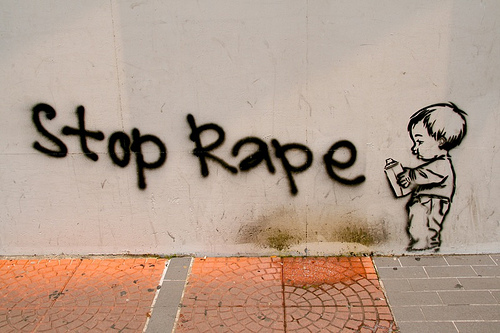
By NICHOLAS D. KRISTOF
http://nyti.ms/pJgoXE
FREETOWN, Sierra LeoneIN a rape treatment center here, I met a 3-year-old patient named Jessica, who was cuddling a teddy bear.
Jessica had seemed sick and was losing weight, but she wouldn’t say what was wrong. Her mother took her to a clinic, and a doctor ferreted out the truth. She had been raped and was infected with gonorrhea.
As I stood in the rape center corridor, reeling from the encounter with Jessica, a 4-year-old girl was brought in for treatment. She, too, turned out to have been infected with a sexually transmitted disease in the course of a rape. Also in the center that day were a 10-year-old and a 12-year-old, along with older girls.
Sexual violence is a public health crisis in much of the world, and women and girls ages 15 to 44 are more likely to be maimed or killed by men than by malaria, cancer, war or traffic accidents combined, according to a 2005 study. Such violence remains a significant problem in the United States, but it’s particularly prevalent in countries like Sierra Leone, Liberia or Congo that have endured civil war. The pattern is that after peace arrives, men stop shooting each other but continue to rape women and girls at staggering rates — and often at staggeringly young ages.
The International Rescue Committee, which runs the rape center here in Freetown, the nation’s capital, says that 26 percent of the rape victims it treats are 11 years old or younger. Last month, the center said, a 10-month-old baby was brought in for treatment after a rape.
“The girls are being blamed,” noted Amie Kandeh, a heroic American-educated Sierra Leonean who runs women’s programs here for the International Rescue Committee (www.rescue.org). “If a girl is raped and she’s above 5, then it’s the way she was dressed. But we’ve had a girl of 2-and-a-half months who was raped. Was it the way her mom put her diaper on?”
That 2-and-a-half-month-old baby died of internal injuries sustained during the rape, said Ms. Kandeh.
The struggle against sexual violence will be won or lost primarily within each country, but the United States could help if Congress reintroduced and passed the International Violence Against Women Act, which would take modest steps to raise the profile of such violence. And the United States could hurt the effort if House Republicans succeed in eliminating financing for the United Nations Population Fund, which works in places like Sierra Leone to combat rape.
Ultimately, the only way to end the epidemic of sexual violence is to end the silence and impunity and send people to prison. But that almost never happens. Ms. Kandeh says that the International Rescue Committee rape centers have treated more than 9,000 patients since 2003 — and fewer than one-half of 1 percent of the rapes have resulted in criminal convictions.
In the eastern city of Kenema, a day’s drive from the capital, I met a 13-year-old girl, named TaJoe, who was being treated for a rape — and whose case underscores why survivors keep quiet.
TaJoe is a bright seventh grader, ranking third in her class of 18. One evening recently, she needed to use the outhouse, some distance away, and she asked her sister to escort her. The sister scoffed and said she’d be fine. TaJoe went by herself, and she says that on her way back she was grabbed by a businessman, thrown to the ground, and raped.
Ashamed and afraid, TaJoe confided in no one. But she developed a sexually transmitted infection that caused a raging fever. She stopped eating, and her health deteriorated. When her family took her to a clinic, doctors discovered the problem and she “confessed.”
The businessman was suspected of raping two other girls in the village, but he also was educated and rich. When TaJoe implicated him, the police acted quickly. They detained TaJoe and her mother, accusing them of sullying the name of a respected member of the community.
The police later released them, but the episode terrified TaJoe. Meanwhile, she says, the businessman promised that if he remained free he would pay all of TaJoe’s future school fees — a bribe that gives her hope of completing an education and transforming her life.
When I asked TaJoe what should be done with the case, she was adamant. “I do not want prosecution,” she said. “I don’t want to make trouble.”
I asked whether the businessman will continue to rape girls. TaJoe said listlessly that maybe he had learned his lesson. She knows that her well-being in the village — and, perhaps, her hopes of a medical career — depend upon her surrender.
“My fear is that they will go and arrest this man,” she told me.
So is the situation hopeless? To my surprise, I found a hint of progress, especially when a teenage girl asked me to help capture her rapist. I’ll tell that story in my next column.
No comments:
Post a Comment